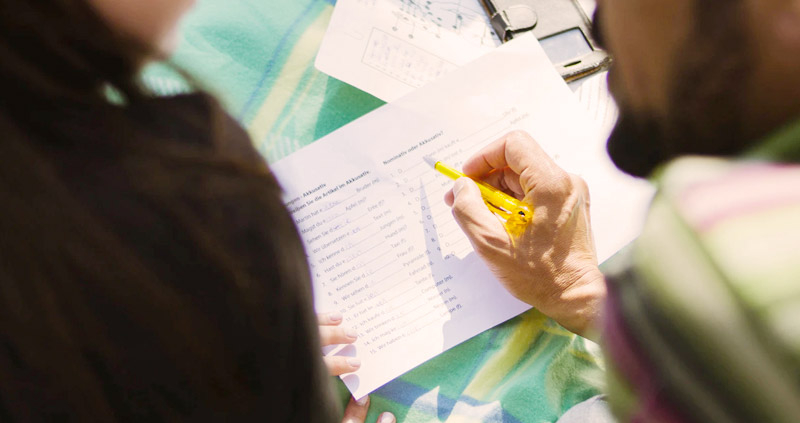Tips for mastering Spanish gender
There are certain topics that make non-native Spanish speakers pull their hair out when learning Spanish.
There are some rules to follow but there are also many exceptions to those rules. There are also ways of talking, sentences or words that simply don’t make sense in other languages but in Spanish they do.
In previous posts, we talked about the use of the verb To Be (Ser & Estar) and about False cognates. Today, we are talking about “Gender in Spanish”. This is one of the topics people struggle the most when learning Spanish, mainly those whose mother tongue doesn’t come from a romance language (i.e. French, Italian, Portuguese).
Learn Gender in Spanish: Spanish Gender Rules
If you are an English speaker you might think that “gender” refers to people in their feminine or masculine form. Which, to a certain extent, it’s true… However, in Spanish, we also use “gender” for nouns, articles and adjectives.
In Spanish, words like “the”, “car”, “house”, “tree”, “lunch”, “black” or “tall” can be feminine or masculine.
While in English, gender is not important unless you are speaking about a living object (i.e. a person or an animal), in Spanish, all nouns (person, place, thing or idea) have a gender.
At first, it might be difficult but after a while it becomes natural and we can even say that you know by intuition what’s the right gender of each word.
What is it important to learn the gender of the nouns in Spanish?
Simple.
The gender of the noun is important because the adjective and articles must match the noun in terms of the gender.
If you don’t pair the words correctly, it’s not a big deal. It sounds weird for native Spanish speakers but they will still understand you.
But since we want you to speak Spanish properly we are here to give you some tips. Keep in mind, though, that it takes more than reading an article to have a couple of Spanish classes. If you truly want to master your spanish language you need to start but making some mistakes, learn from them and practice, practice, practice.
How to know when a noun is feminine or masculine?
Everything in Spanish is either male or female. Our language is charged with gender power!
The most common structure for nouns in Spanish is:
(article) + noun + (adjective)
So, let’s follow this stricture. Let’s talk about Spanish article gender rules first.
1. Articles
In English, there are three articles:
Definite article “The”
- Feminine
- Masculine
- Singular
- Plural
Definite articles “a”, “an”
- Feminine
- Masculine
- Singular
- Plural (“some” is not considering an article but it is used as such)
In Spanish, we have a total of eight articles. Yes, eight!
That’s because we change the articles according to both gender (feminine and masculine) and number (singular and plural)
Definite articles “The”
- Masculine, singular: “el”
“El niño”. The kid - Feminine, singular: “la”
“La niña”. The kid - Masculine, plural: “los”
“Los niños”. The kids - Feminine, plural: “las”
“Las niñas”, The kids
Indefinite articles “a”, “an”, “some”
- Masculine, singular: “un”
“Un niño”. A kid - Feminine, singular: “una”
“Una niña” A kid - Masculine, plural: “unos”
“Unos niños”. Some kids - Feminine, plural: “unas”
“Unas niñas”. Some kids
2. Nouns
Who is to decide whether “lámpara” (lamp) is masculine or feminine? – It’s feminine by the way
What determines a “libro” (book) to be a masculine noun? And what makes “cuchara” (spoon) a feminine noun?
Thankfully, there are some rules to follow to help you remember whether a noun is masculine or feminine.
Masculine Nouns
Rule No. 1
Nouns ending in “o”, “os”
Examples
- “El libro” (The book)
- “Un pájaro” (A bird)
- “Los vasos” (The glasses)
Rule No. 2
Nouns ending in “ma”, mas”
Examples
- “Los problemas” (The problems)
- “El aroma” (The fragance)
- “El clima” (The weather)
Rule No.3
Nouns which refers to males
Examples
- “El padre” (The father)
- Los reyes (The kings)
- “El hijo” (The son)
Rule No.4
Nouns ending in “r”, “res”
Examples
- “Los motores” (The motors)
- “Un calentador” (A heater)
- “El comedor” (The dining room)
Rule No.5
Nouns ending in “aje”, “ajes”
Examples
- “El viaje” (The trip)
- “El equipaje” ( The luggage)
- “Los porcentajes” (The percentages)
Rule No.6
Days of the week
Examples
- “El lunes” (Monday)
- “El martes” (Tuesday
- “El miércoles” (Wednesday)
- “El jueves” (Thursday)
- “Los viernes”(Fridays)
- “El sábado” (Saturday)
- “Los domingos” (Sundays)
Notes: – In English, the days of the week don’t use articles. In Spanish they do
– In Spanish, months of the year don’t use articles
Rule No.7
Compass directions
Examples
- “El norte” (North)
- “El sur” (South)
- “El oriente” (East)
- “El occidente” (West)
Rule No.8
A group with mixed genders is always* masculine
Examples
- “Los estudiantes” (The students)
- “Los padres” (The parents)
- “Unos colegas” (Some colleagues)
Rule No.9
Languages
Examples
- “El español” (The Spanish language)
- “El inglés” (The English language)
- “El italiano” (The Italian language)
Tip:
People use the word “LONERS” to help remember when a noun is masculine. Words that end with any of the letters in LONERS are usually masculine.
Some examples include:
L → El papel (paper)
O → El oso (bear)
N → El atún (tuna)
E → El hambre (hunger)
R → El calor (hot weather)
S → El bus (bus)
Feminine Nouns
Rule No. 1
Nouns ending in “a”, “as”
Examples
- “La guitarra” (The guitar)
- “Una camisa” (A shirt)
- “Las camas” (The beds)
Rule No. 2
Nouns ending in “ión”, “ión”
Examples
- “La religión” (The religion)
- “La comunicación” (The communication)
- “La pasión” (The passion)
Rule No. 3
Nouns ending in “dad”, “tad”
Examples
- “Una ciudad” (A city)
- “La verdad” (The truth)
- “La libertad” (The freedom)
Rule No. 4
Nouns ending in “umbre”
Examples
“Una costumbre” (A tradition)
“La cumbre” (The summit)
“La incertidumbre” (The uncertainty)
Rule No. 5
Nouns ending in “z”
Examples
“La paz” (Peace)
“La nariz” (The nose)
“La actriz” (The actress)
Rule No. 6
Letters of the alphabet
Examples
La “a” (The “a”)
La “b” (The “b”)
La “c” (The “c”)
Rule No. 7
Nouns which refer to females
Examples
“La madre” (The mother)
“La reina” (The queen)
“La princesa” (The princess)
Exceptions to the rule
Here comes the fun!
All languages have rules, and all rules have exceptions. The Spanish language is no different.
Exceptions are just that, exceptions. We don’t need to understand them or find the logic behind them, we just need to learn them.
To make your life easier we have prepared a list of the most common exceptions to the rules listed above.
Exceptions to the feminine rules
“El día” (The day)
“El mapa” (The map)
“El Sofá” (The couch)
“El agua” (The water)
“El artista” (The artist)
“El cura” (The priest)
“El planeta” (The planet)
Exceptions to the masculine rules
“La mano” (The hand)
“La radio” (The radio)
“La moto” (The motorbike)
“La modelo” (The model)
“La piloto” (The pilot)
“La foto” (The photo)
3. Adjectives
As a reminder, an adjective is what we use to describe a noun.
In English, adjectives are similar to articles and nouns with regards to gender; they simply don’t have a gender.
“Red”, “short”, “big” are used in the same form for all nouns regardless of the gender -if any- and regardless of the number (singular or plural).
In Spanish, knowing the gender of the noun is crucial because it defines the article and the adjective you need to use.
Adjectives in Spanish also change slightly their form -their ending- depending on the gender. Adjectives can be masculine, feminine, and neutral
- Masculine: Typically the ending of the adjective changes to “o”
- Feminine: Typically the ending of the adjective changes to “a”
- Neutral: Typically the word never changes regardless of the gender
Let’s see some examples:
| Masculine | Feminine | |
|---|---|---|
| White | Blanco “El avión blanco” (The white plane) | Blanca “La casa blanca” (The white house) |
| Tall | Alto “El edificio alto” (The tall building) | Alta “La chica alta” (The tall girl) |
| Perfect | Perfecto “El clima es perfecto!” (The weather is perfect!) | Perfecta “La temperatura es perfecta” (The temperature is perfect) |
| Big | Grande “El museo es grande” (The museum is big) | Grande “La jirafa es grande” (The giraffe is big) |
| Kind | Amable “El vecino es amable” (The neighbor is kind) | Amable “La vecina es amable” (The neighbor is kind) |
That’s all for today!
We hope this article has been useful to you. Remember that the key to mastering any language is practice!
If you want to improve your current level of Spanish do not hesitate to contact us. Join our school in Bogota or our online program.










